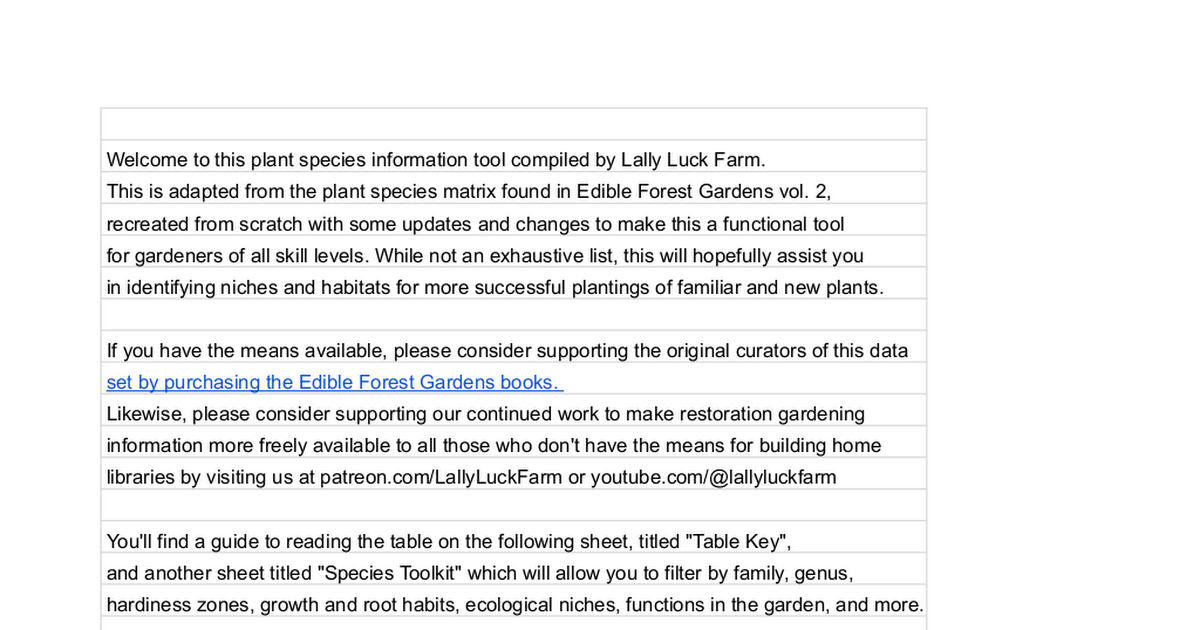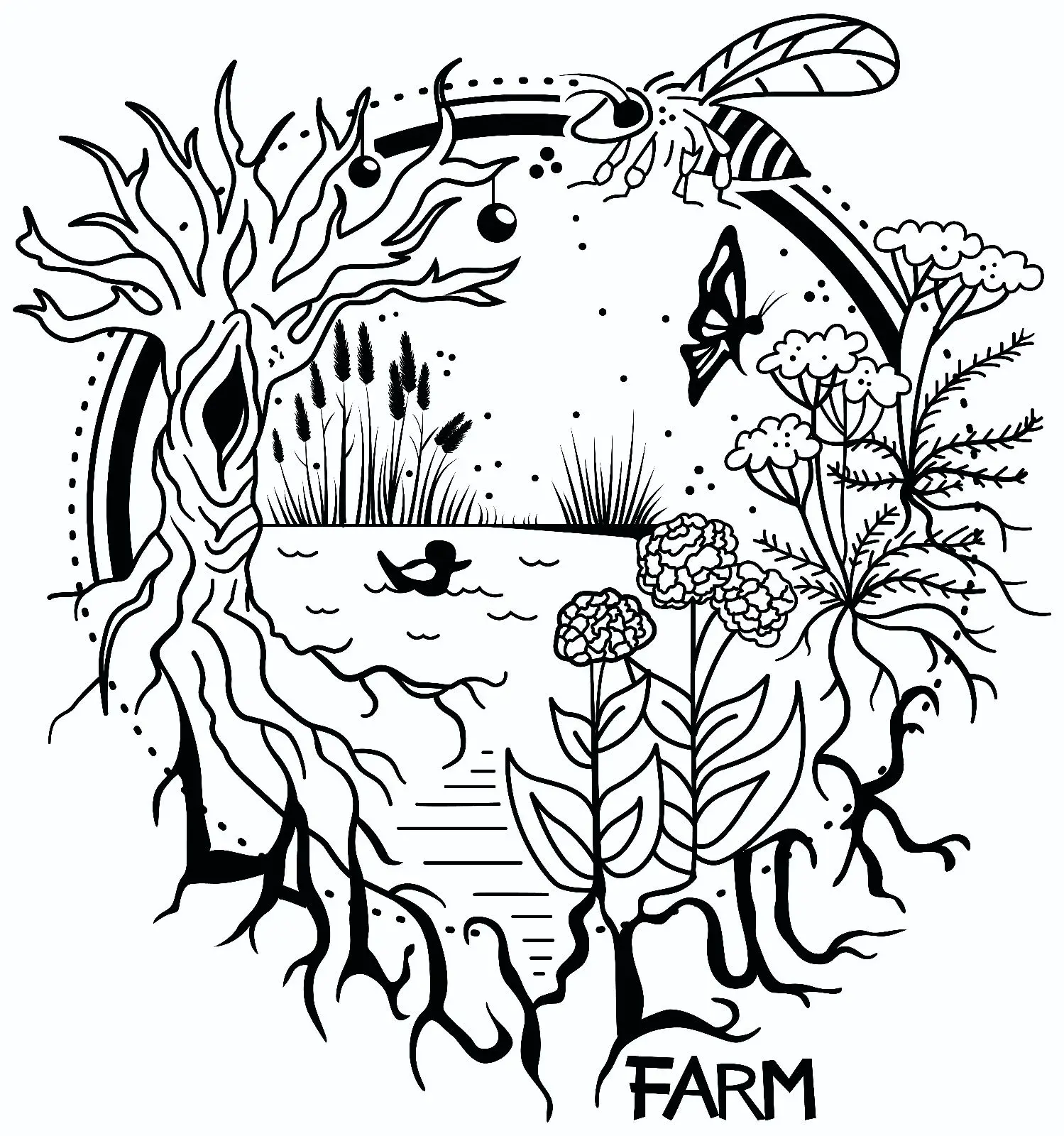- cross-posted to:
- gardening@thegarden.land
Hey there everybody
This is a spreadsheet we made to help folks pick out plants for their gardens by sorting and filtering for all sorts of growth habits, uses, and site conditions. Please feel free to make a copy and use it in your software of choice and share it with gardening friends if you like; all we ask is proper attribution. For full disclosure, this is adapted from the Plant Species Matrix found in Edible Forest Gardens vol. 2 by Dave Jacke and Eric Toensmeier. We lovingly (painstakingly) went line by line to make it again and update a few data points to reflect new information like hardiness zones or pH as well as add the utility of being able to whittle down such a huge list to only what niche you’re looking for.

Is this strictly an edible gardening matrix? Right off the bat I noticed some commercial landscaping plants not included (even Amelanchier arborea not on there). I’m a landscape designer and for those looking at adding color and structure into their gardening repertoire, I’d be interested in adding some categories for say regional nursery accessibility or brands for types of plants. Example Midwest you have proven winners(everyone can access), christiansens, cottage gardens, Monrovia (everyone can access), Weekes, David Austin (everyone can access), etc.
Could increase usability but also might make it too complex. Food for thought.
It is primarily about edible varieties, yes. There are some entries that are medicinal or fiber-producing, but it’s mostly about food plants. We had considered adding nursery information, but opted to remain brand agnostic. There are tons of great small-scale nurseries that live and die by people looking for plants grown in their area and it felt unfair to give the big players another platform.
All that said, you’re truly invited to use the format we’ve provided and create companion work or even just another sheet within the document for plants with a landscaping focus. We’d be happy to have it as part of the toolkit, happy to give credit for your work, and delighted to point to any tipjar type of thing you have for your contribution. If that’s something you’re into, and we can help somehow, know you’re welcome to drop us a line and have a chat.

Thanks, I will definitely be using this! I was planning on creating something of the sorts myself. But now I have a great foundation on which I can build.
I’d love to see additions and improvements you make when you’re ready to share! I have another data set I’m working on for it in regards to propagation information but it’s a lot of data to sift through.

Absolutely!

Neat though very NE US centric. I also disagree with some of the ratings but that’s probably inevitable with such a large list of plants.
Neat though very NE US centric
Guilty as charged. It started as a way for us to avoid cross referencing everything in a few books centered around our bioregion.
There were a few entries where better data was readily available and could be integrated with confidence but others were anecdotal in nature and could be chalked up to differences in cultivation or site conditions, and those were not used. If you have some corrections to offer and some reference for it we’re certainly open to improving the toolkit’s accuracy.

One that struck me was silver maple. You have it as adaptable to xeric conditions but I only see it in well irrigated or riparian areas. Plants in drier spots tend to really struggle.
I’ll check on my notes and double check that entry


